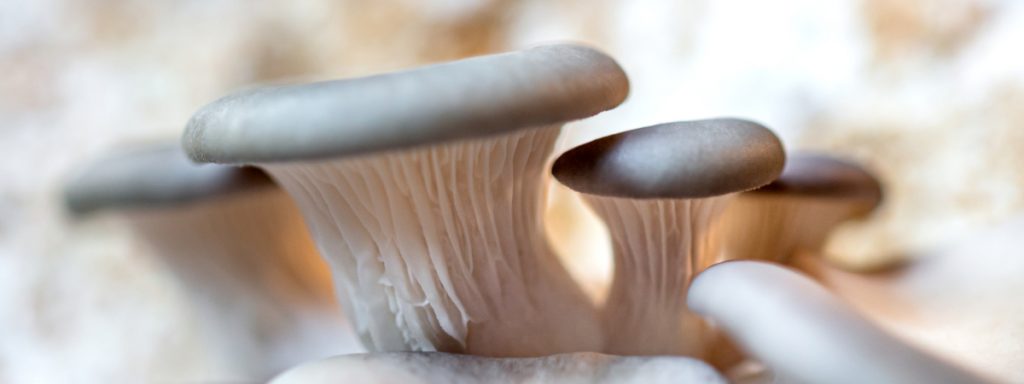Mushrooms are some of the most mysterious life forms on our planet, so it’s fitting that they have a unique life cycle as well.
Fungi aren’t quite plants and they aren’t quite animals, so they’ve got their own distinct process of birth, living and dying.
If you’re interested in mushrooms, then their life cycle is a process that you’ll want to understand.
This is true if you’re foraging for mushrooms in the wild, but especially if you’re growing your own mushrooms.
A good understanding of the mushroom life cycle will allow you to know what your mushrooms need at different stages of their lives.
That way, you can produce the best possible mushroom harvest for yourself or your customers.
This article will explain the entire mushroom life cycle–from when they’re born all the way through until they die.
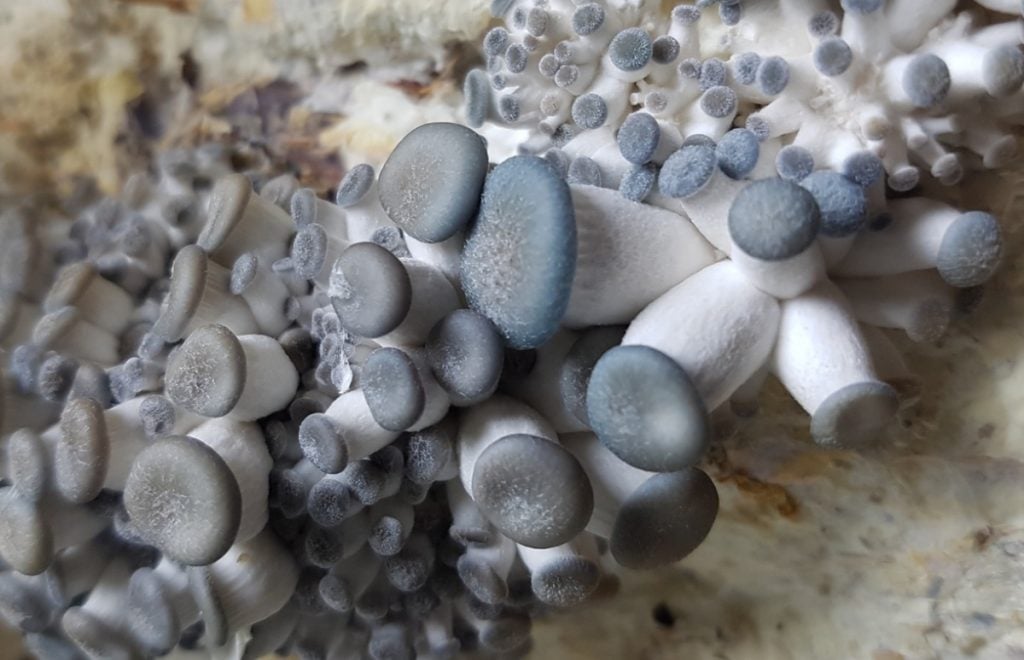
What Is a Mushroom?
A mushroom is the fruiting body that some types of fungi produce.
You can think of them as the equivalent of fruits or vegetables on a plant.
They’re like the apples to an apple tree. Except for mushrooms, the seeds they produce are millions of tiny spores.
When we think of fungi, mushrooms are usually the first thing that comes to mind.
That’s because they appear prominently above-ground, growing on decomposing matter like soil, or on the side of a tree.
But there’s really a lot that goes on behind the scenes with fungi before they ever produce a mushroom.
How are mushrooms different from toadstools? Be sure to read What Is A Toadstool? Toadstools vs. Mushroom to find out.

The Life Cycle of Fungi
There are four basic steps in the life cycle of a fungi:
1. Spore
2. Germ
3. Hyphae
4. Mature mycelium
In reality, there are many sub-steps of the process. But this model provides a good overview in terms of how fungi grows from birth to death.
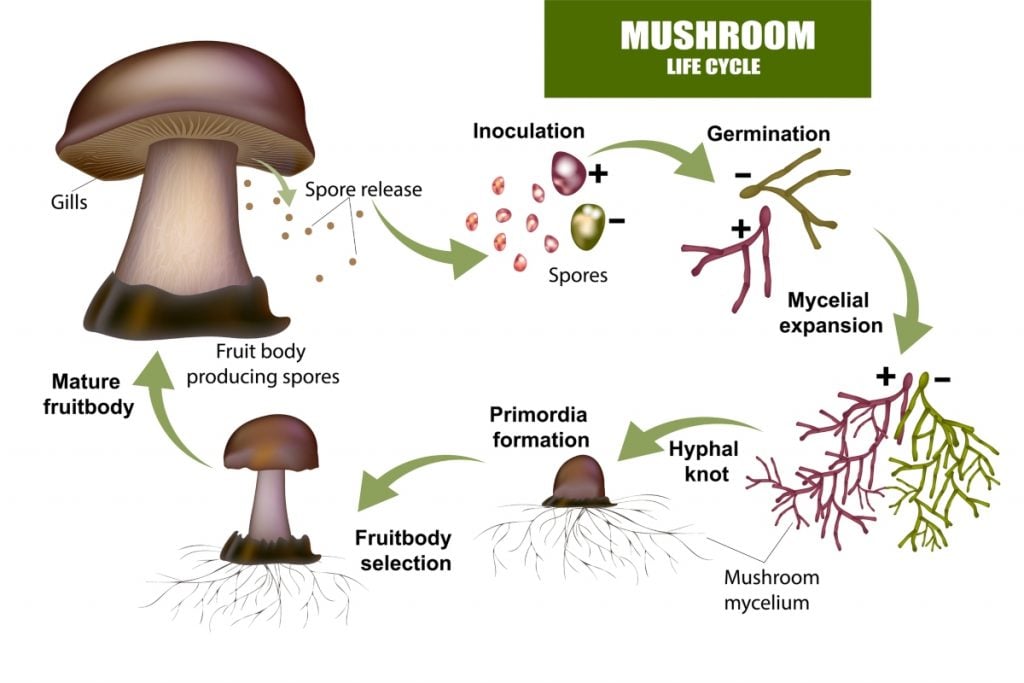
1. Spore Phase
Mushroom spores are tiny microscopic reproductive units that are produced by fungi (as well as some types of plants and algae).
You can think of the spore phase as both the beginning and end of a mushroom’s life.
On one hand, a mushroom has fulfilled its purpose once it has fully matured and released its spores.
A mature mushroom will almost immediately begin to decompose after this process is done.
However, mushroom spores also represent the new life for the next generation of mushrooms.
Spores are carried via wind or water until they ultimately settle on a surface with favorable conditions to start growing.
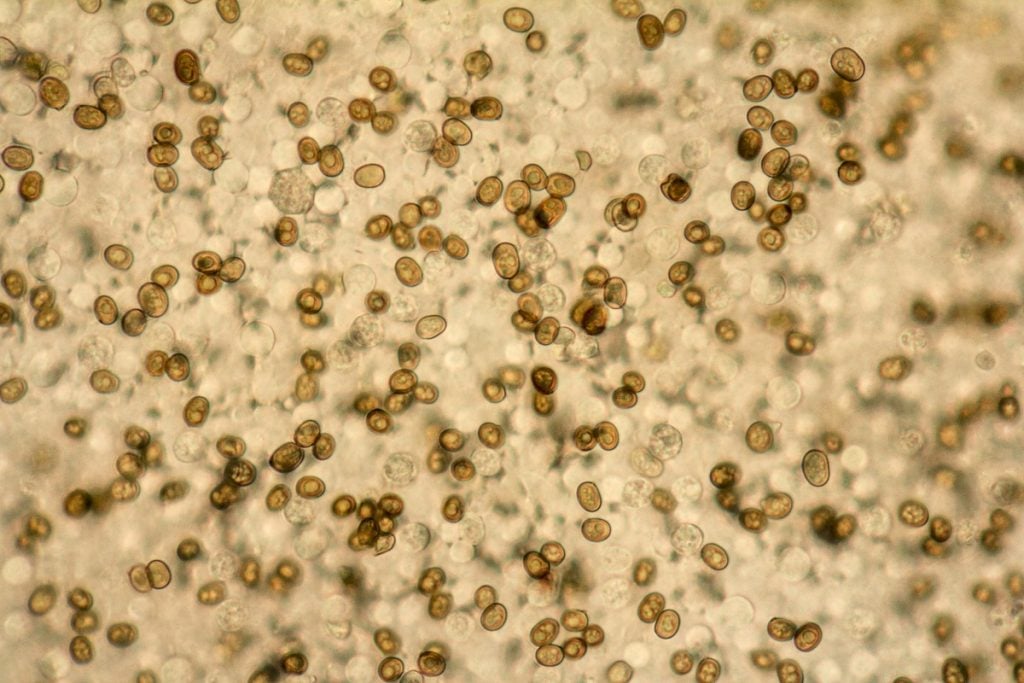
2. Germ Phase
Despite the name, this doesn’t have anything to do with bacteria or disease.
Mushroom spores can detect once they’re somewhere with proper moisture and food present. Then they germinate and form something called a germ tube.
A germ tube is the first multicellular outgrowth from a single-celled spore. It begins the process of differentiating and growing via mitosis.
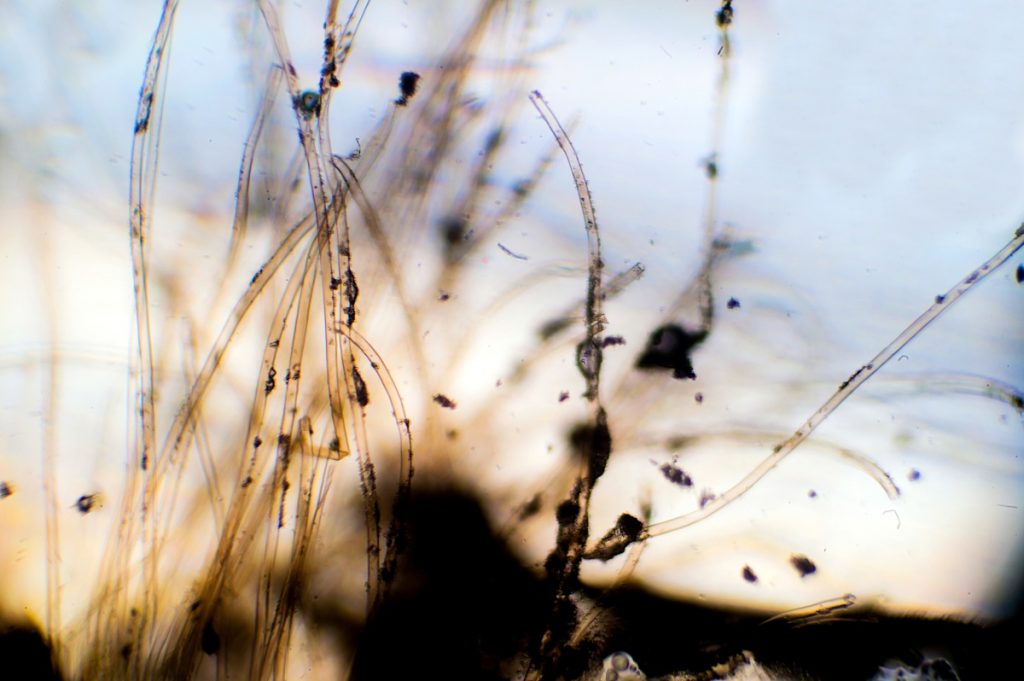
3. Hyphae Phase
The germ tube eventually begins to grow into something called hyphae. These are structures that a fungus uses to begin to gather nutrients and energy, as well as grow even further.
Hyphae look like long, thin strings that spread out through a growing medium. They release digestive enzymes that break down food to fuel more growth.
4. Mature Mycelium Phase
Once hyphae begins to form a larger colony, we refer to it as mycelium. Mycelium are essentially the mushroom roots.
We refer to large, organized groups of hyphae as mycelium.
So we could say that all mycelium is made of hyphae. But not all hyphae have necessarily formed a mycelium colony yet, depending on how far along in their life cycle they are.
Mycelium will eventually grow and spread to consume all of the organic material in a particular substrate.
Mature mycelium then waits until it’s exposed to specific conditions, like specific carbon dioxide or temperature levels, as well as light and humidity.
At that point, they’ll begin to fruit and produce mushrooms.
Once the mushroom fully matures, it releases its spores and the process starts all over again.
What are mushrooms exactly? Check out our article Are Mushrooms Vegetables? Learn How Mushrooms Are Classified.
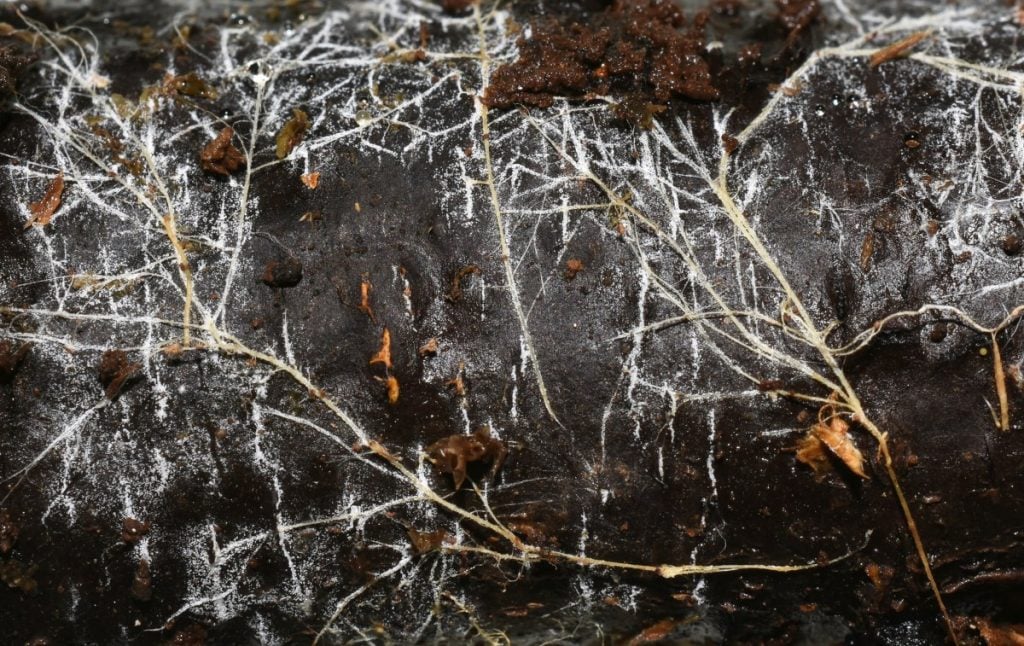
The Mushroom Life Cycle: A Simple Explanation for Growers
The above explanation is a bit scientific and it covers many parts of a mushroom life cycle that you’re not actually able to see.
So let’s simplify it a bit and explain the parts of a mushroom life cycle that are more relevant to a mushroom grower.
As an alternative to reading the information below, you could also watch our video on the life cycle of mushrooms here:
1. Release of spores (birth) – As we mentioned above, a mature mushroom will release its spores as a way of reproducing.
2. Growing into hyphae – Spores begin to divide and produce hyphae once they land in the right habitat. Hyphae immediately begins to look for water and food.
3. Hyphae meet and combine – As hyphae come into contact with each other, they’ll start to combine.
4. Mycelium creation – The repeated combining of hyphae creates a colony called mycelium.
The majority of a fungi’s life is spent as a mycelium.
At this point, you’ll see a shift within your growing medium from only seeing thin white strands to thick patches of fluffy white mycelium.
Mycelium acts a bit like an inside-out stomach that secretes enzymes to break down and feed off things like leaves and wood.
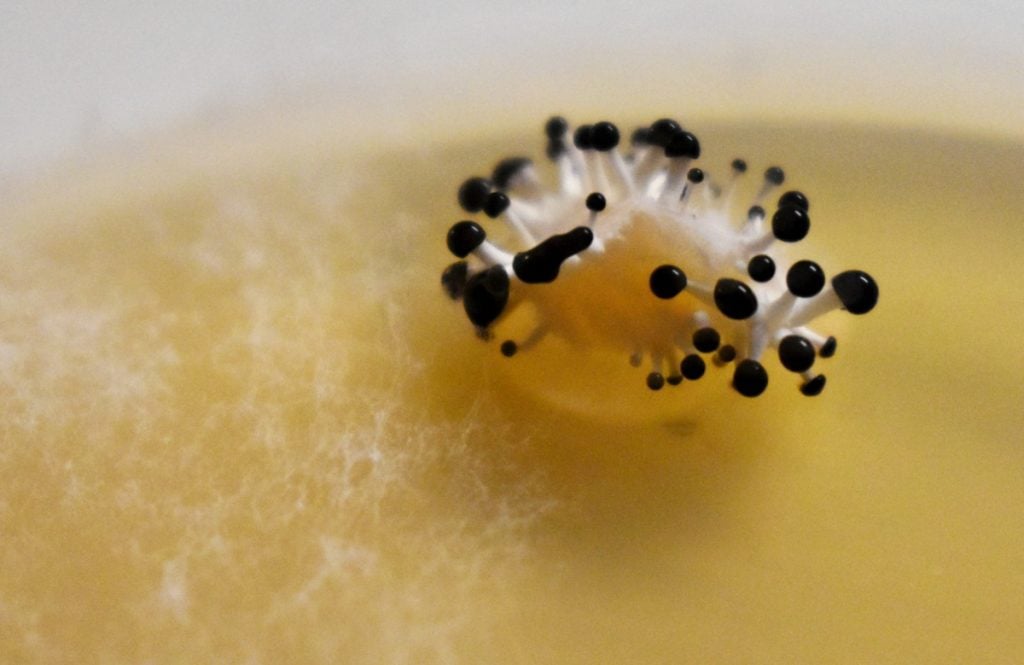
5. Hyphal knot growth – When mycelium is ready to start producing mushrooms, it will start to form structures called hyphal knots.
Hyphal knots are also referred to as primordium and the process of hyphal knot creation is commonly called “pinning”.
Hyphal knots are the first visible sign of structures that will eventually become mushrooms.
6. Fruiting body growth – Hyphal knots will rapidly begin to grow at this point and eventually become mature fruit bodies.
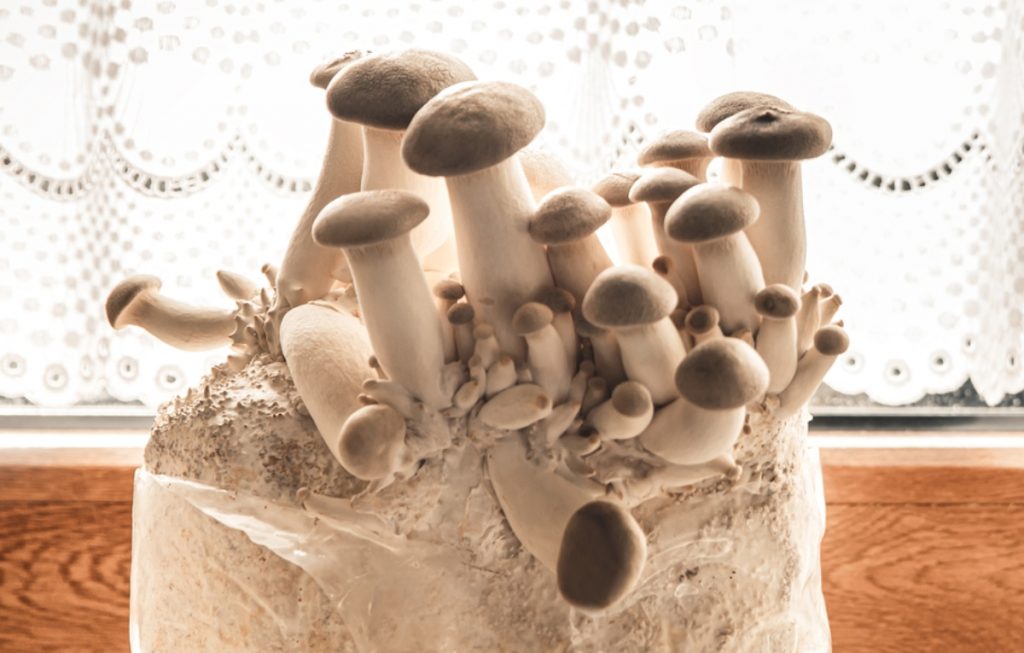
Different Types of Mushrooms and How They Grow
There are two main types of fungi: Saprophytes and parasites.
Saprophytes are a category of mushrooms that grow on dead or decaying organic matter.
Parasitic mushrooms infect living hosts, such as plants or insects.
The actual life cycle of either type of mushroom is the same. It’s just a matter of where a particular type of fungus likes to grow and what it prefers to eat.
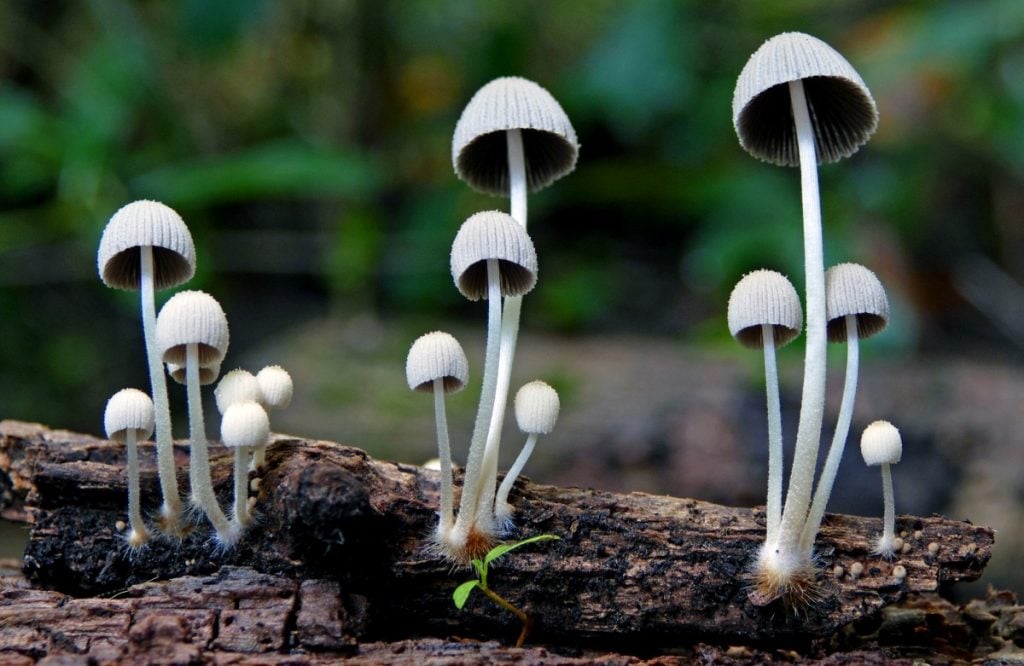
How Long Is the Life Cycle of a Mushroom?
The life cycle length of a mushroom can vary a lot from one species to the next.
Some fast-growing mushrooms, like oyster mushrooms, can fully colonize their substrate and be producing fruiting bodies in as little as three or four weeks.
Many varieties, like shiitake mushrooms, can take six to 12 months after inoculation before they start to fruit. Especially if they’re grown on logs.
At the extreme end, some kinds of fungi like truffles can take over a decade from when a spore germinates until it produces fruit.
How Is a Mushroom Formed?
The formation of a mushroom ultimately begins once the mycelium starts to produce hyphal knots (also known as primordia).
These are the structures that will ultimately grow into mushrooms. And it’s the first time that we can see mushroom-like structures starting to form on mycelium with only the naked eye.
Though everything from when a spore germinates all the way through until a mushroom grows is really part of the process.
Mushrooms wouldn’t be able to grow without all of the work and energy that went into the earlier stages of the process.
Most of it is just happening inside a growing medium, or on such a small scale that we aren’t able to observe it.
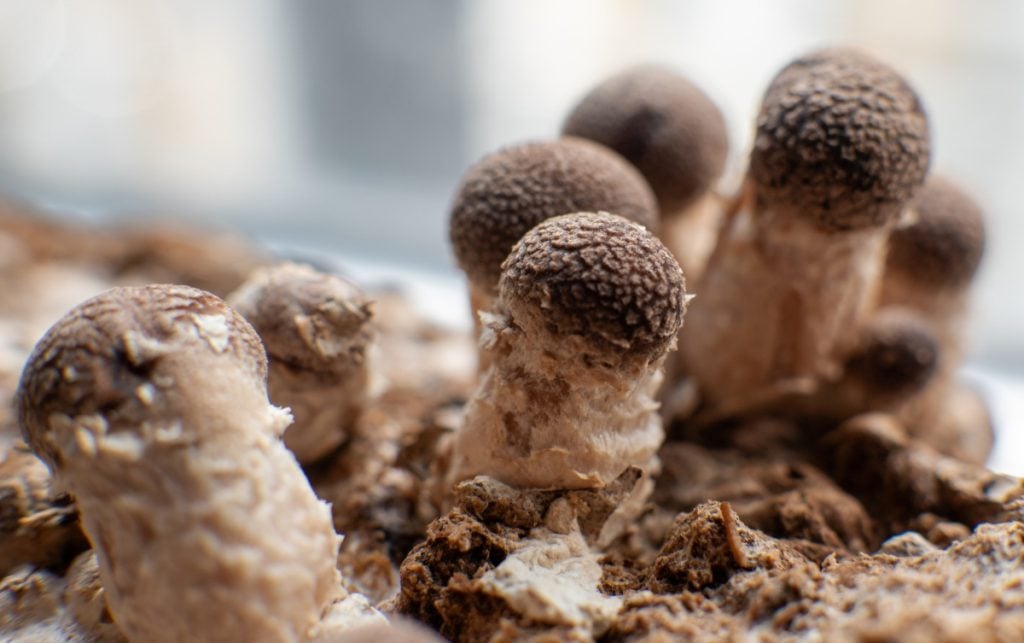
Where and When Does Fertilization Occur in the Mushroom Life Cycle?
Fertilization occurs in the mushroom life cycle when hyphae begin to combine.
This is probably the closest thing in the mushroom life cycle that we could compare to something like pollination in plants.
Some fungi reproduce sexually, while others reproduce asexually. Some can even choose between either option!
Eager to learn more? Check out our article How do Mushrooms Reproduce? for a deeper explanation.
Sexual Mushroom Reproduction
For fungi to reproduce sexually, first the spores of two different mushrooms need to land and begin to grow in the same area.
Then the hyphae from two different spores need to come into contact with one another.
All hyphae begin as “haploid,” meaning that they have a full copy of their genetic information.
However, when the hyphae from one compatible fungi encounters another, they can fuse and combine to form a single “diploid” cell.
A diploid cell contains genetic information from both of the original mushrooms. This fusing process is called karyogamy.
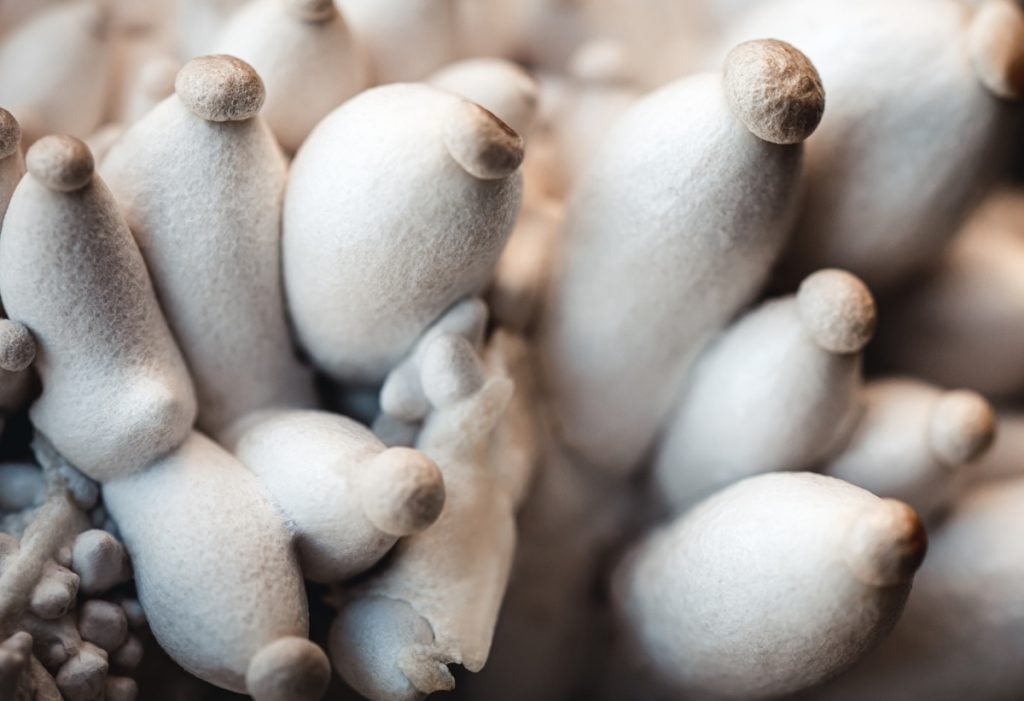
Asexual Mushroom Reproduction
Some varities of fungi may reproduce exclusively through asexual means.
Others may only reproduce asexually if they aren’t able to find nearby mycelium from another fungi to reproduce with.
Most fungi can make the choice to reproduce asexually, as a matter of survival. In this case, the offspring are essentially clones of the original parent.
For a fungi to reproduce asexually, it produces something called mitospores.
Basically, it uses the process of mitosis (a type of cell division). These mitospores can then grow into a new mycelium which can undergo sexual reproduction.
Life Cycles of Common Mushroom Varieties
Ultimately, all fungi will follow the same life cycle that we’ve described above.
However, some mushrooms behave differently during the fruiting stage. Let’s take a closer look at a few varieties.
What Is the Life Cycle of a Button Mushroom?

The agaricus bisporus mushroom is one of the few varieties that we as humans harvest at varying stages of ripeness.
After it forms a primordia, the first type of mushroom that you’ll recognize is the white button mushroom. This is technically an immature mushroom that hasn’t fully developed yet.
However, it’s also one of the most commonly found in grocery stores around the world.
If a button mushroom is allowed to continue its life cycle a bit further, it becomes a cremini mushroom. This is when it gets a little larger and develops a darker cap.
If allowed to complete its life cycle, an agaricus bisporus mushroom becomes what we commonly call a portobello mushroom.
This is when a cremini mushroom has fully grown and its cap has opened up to reveal its gills and spores.
What Is the Life Cycle of a Morel Mushroom?
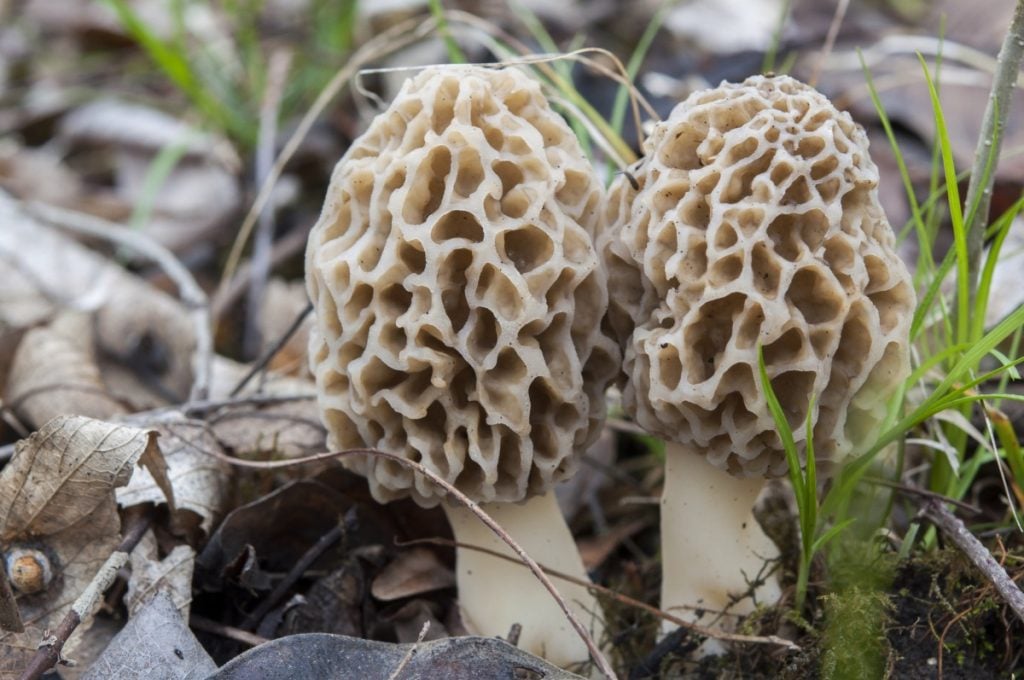
The morel mushroom life cycle only takes about six days from when it first begins to fruit until it’s fully grown and ready to harvest.
Morel mushrooms are a favorite woodland variety that are sought after for their firm texture and intense nutty flavor.
They’re a good example of how many mushrooms complete their life cycle in the wild.
Since morels grow outdoors exposed to the elements, their life cycle can be greatly influenced by temperature, precipitation and other weather conditions.
If you’re on the hunt for morels, you’ll want to read our Complete Guide To Morel Mushrooms.
What Is the Life Cycle of Oyster Mushrooms?
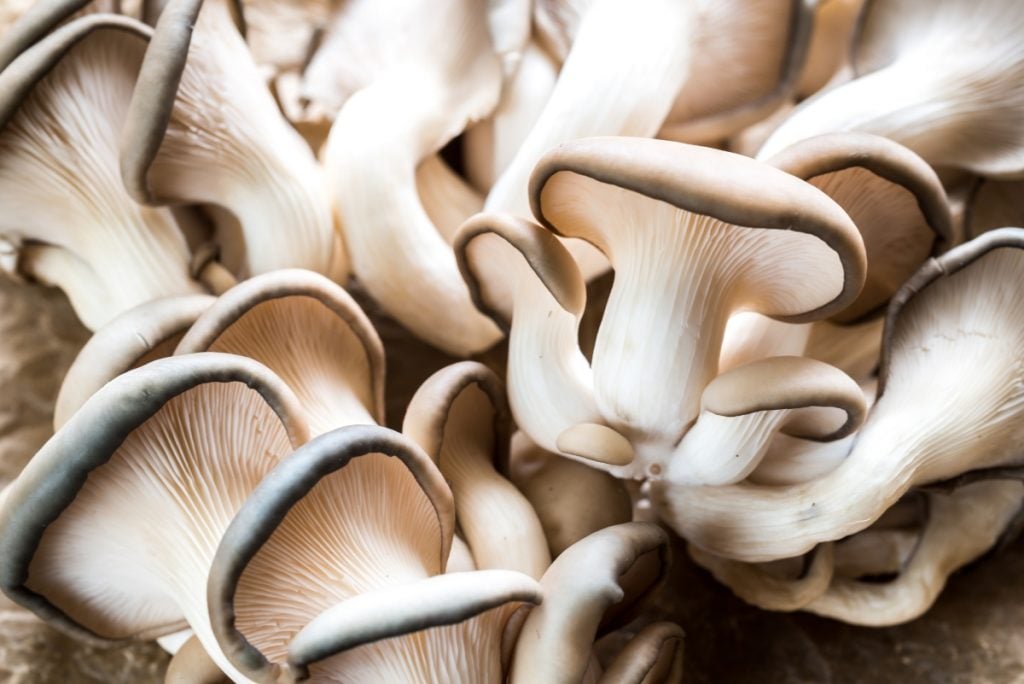
When oyster mushrooms begin fruiting, they tend to pop up in large clusters.
This is different from many other types of mushrooms where you harvest them individually. Oyster mushrooms are twisted off in whole clusters.
You’ll know your oyster mushrooms have completed their life cycle and are ready to harvest as their caps will start to flatten at the top and edges.
Final Thoughts
Mushrooms have a fascinating and unique life cycle.
The way that fungi grow and reproduce is truly unlike anything else on this planet.
Since it’s so different from the animals and plants that we see day-to-day, it can seem difficult to understand at first.
But it’s not too hard to wrap your head around the idea once you’ve got the basics.
If you want to take your knowledge of the mushroom life cycle to the next level, why don’t you pick up one of our GroCycle Mushroom Grow Kits?
If you’re a bit more advanced, you can try starting from scratch with the mushroom spawn that we offer for sale.
Either one will give you a one-of-a-kind look into the mushroom life cycle as it unfolds in real time.
